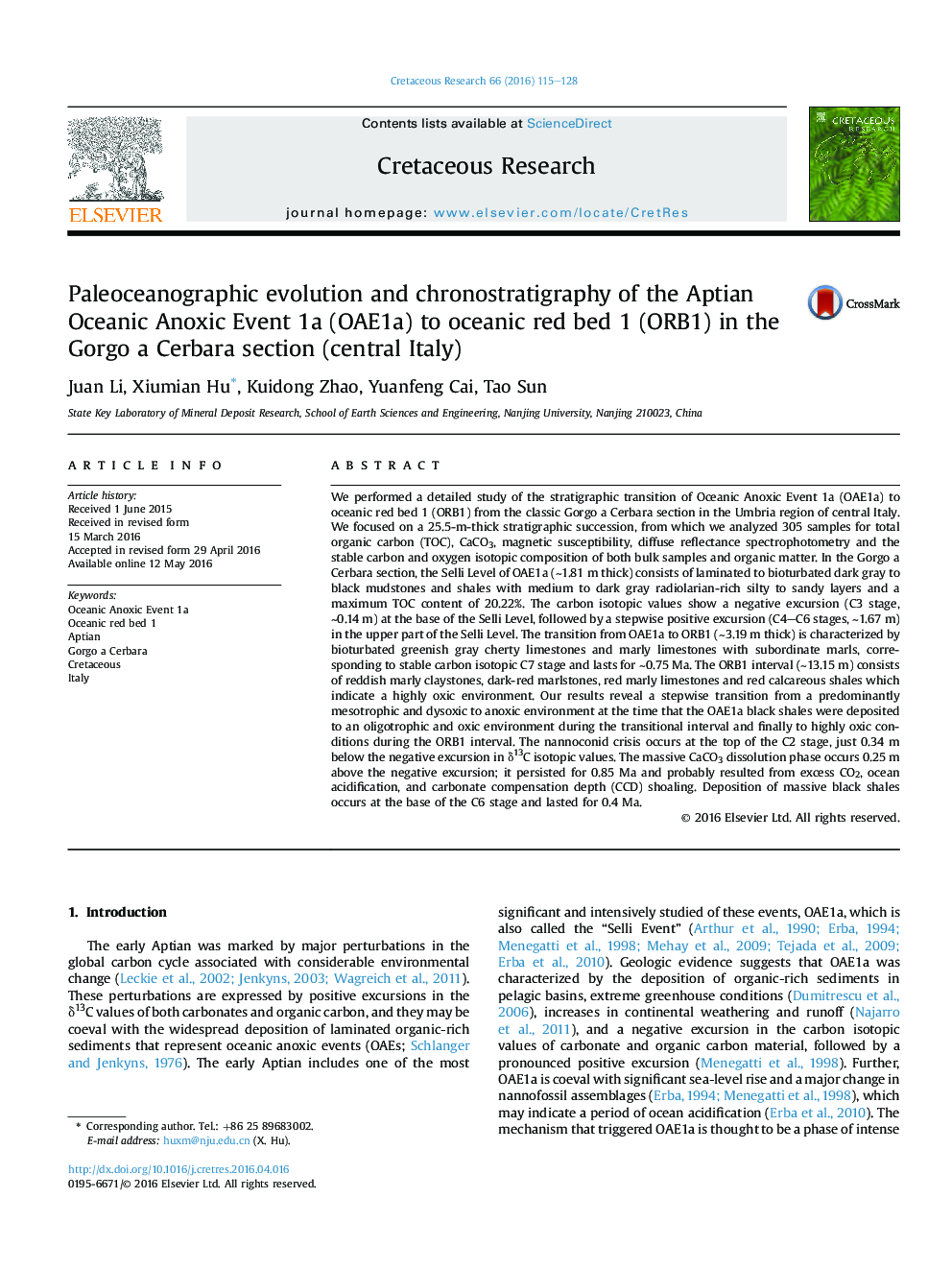| کد مقاله | کد نشریه | سال انتشار | مقاله انگلیسی | نسخه تمام متن |
|---|---|---|---|---|
| 4746704 | 1642057 | 2016 | 14 صفحه PDF | دانلود رایگان |

• The stratigraphic and paleoenvironmental transition from the OAE1a to the oceanic red beds (ORB1) in central Italy.
• The OAE1a-ORB1 transition corresponds to carbon isotopic C7 stages and lasted ∼0.7 5Myr.
• Chronostratigraphy of the Early Aptian paleoceanographic events in central Italy.
We performed a detailed study of the stratigraphic transition of Oceanic Anoxic Event 1a (OAE1a) to oceanic red bed 1 (ORB1) from the classic Gorgo a Cerbara section in the Umbria region of central Italy. We focused on a 25.5-m-thick stratigraphic succession, from which we analyzed 305 samples for total organic carbon (TOC), CaCO3, magnetic susceptibility, diffuse reflectance spectrophotometry and the stable carbon and oxygen isotopic composition of both bulk samples and organic matter. In the Gorgo a Cerbara section, the Selli Level of OAE1a (∼1.81 m thick) consists of laminated to bioturbated dark gray to black mudstones and shales with medium to dark gray radiolarian-rich silty to sandy layers and a maximum TOC content of 20.22%. The carbon isotopic values show a negative excursion (C3 stage, ∼0.14 m) at the base of the Selli Level, followed by a stepwise positive excursion (C4–C6 stages, ∼1.67 m) in the upper part of the Selli Level. The transition from OAE1a to ORB1 (∼3.19 m thick) is characterized by bioturbated greenish gray cherty limestones and marly limestones with subordinate marls, corresponding to stable carbon isotopic C7 stage and lasts for ∼0.75 Ma. The ORB1 interval (∼13.15 m) consists of reddish marly claystones, dark-red marlstones, red marly limestones and red calcareous shales which indicate a highly oxic environment. Our results reveal a stepwise transition from a predominantly mesotrophic and dysoxic to anoxic environment at the time that the OAE1a black shales were deposited to an oligotrophic and oxic environment during the transitional interval and finally to highly oxic conditions during the ORB1 interval. The nannoconid crisis occurs at the top of the C2 stage, just 0.34 m below the negative excursion in δ13C isotopic values. The massive CaCO3 dissolution phase occurs 0.25 m above the negative excursion; it persisted for 0.85 Ma and probably resulted from excess CO2, ocean acidification, and carbonate compensation depth (CCD) shoaling. Deposition of massive black shales occurs at the base of the C6 stage and lasted for 0.4 Ma.
Journal: Cretaceous Research - Volume 66, November 2016, Pages 115–128